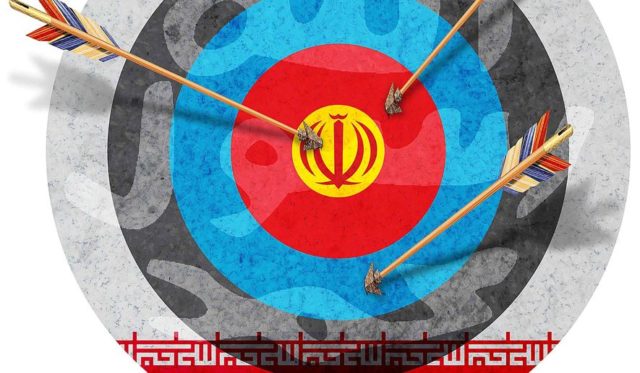Psychiatrists tell their patients they have to “name their fears.” A fear that cannot be named cannot be understood or faced. An unnamed threat cannot be defeated. This is particularly true of what is called the threat of “terrorism.”
A recent Washington Post commentary, “Terrorism won’t just go away,” exemplified the problem. By Joshua A. Geltzer and Nicholas J. Rasmussen, two well-placed former Obama administration officials, the column mentioned “terrorism” and “terrorist” 14 times. But “terrorism” is simply a tactic used by “terrorists” in pursuit of political, ideological, economic, religious or nationalist aims.
Something called the “global war on terrorism” might never end. But the struggle against the threat posed by what can be termed Islamic triumphalism or jihad might be finished if properly fought.
Not only must the threat be named, but also the ideology. And so must the practitioners — including the Islamic State and al-Qaeda, which The Post Op-Ed specified — and Iran’s Islamic Revolutionary Republic, Hezbollah, Hamas and other movements inspired by anti-Western, anti-Christian and anti-Jewish political Islam.
After Japan struck Pearl Harbor on Dec. 7, 1941, killing 2,400 Americans, the United States did not declare war on surprise attacks, a technique. It went to war against Imperial Japan, which embodied military expansionism.
But following al-Qaeda’s destruction of New York City’s World Trade Center and devastation of the Pentagon in Washington, D.C. on Sept. 11, 2001, which killed more than 3,000 non-combatants, the United States insisted on fighting terrorism, not the aggressive ideology behind the technique.
As a result, although United States and allied forces have killed tens of thousands of ISIS, al-Qaeda and other terrorists in the greater Middle East and elsewhere, the end is not in sight. After expenses potentially totaling several trillion dollars, more than 7,000 American troops killed and tens of thousands wounded, the fight exhibits whack-a-mole characteristics.
“We understand [President Donald Trump’s] desire to ‘wrap up’ counterterrorism problems” and move on to other challenges, Mr. Geltzer and Mr. Rasmussen wrote. But the Obama administration’s wish to do likewise contributed to the Islamic State’s deadly rise in Iraq and Syria and White House acknowledgement then that the war on terror would be “a generational struggle.”
Now, though U.S.-assisted forces have destroyed ISIS’ “caliphate,” “thousands of Islamic State fighters remain in Syria. And al-Qaeda and its affiliates continue to pose threats from Syria to Yemen to Somalia,” Mr. Geltzer and Mr. Rasmussen concede.
In addition, individuals and cells affiliated with or simply inspired by such groups have committed murder in the United States, Canada, Great Britain, France, Belgium, Germany and elsewhere and plot more killings. This is not to mention Islamist-instigated attacks against Israelis in Bulgaria, Kenya, India and Israel itself.
Successful counterterrorism tactics can supplement but not replace a successful counterterrorism strategy.
In World War II, the Allies’ geo-political demand was unconditional surrender by the Axis powers — Nazi Germany, Imperial Japan, and fascist Italy. Allied military and diplomatic strategy brought that about.
Islamism or jihadism operates at sub-national and trans-national levels as well as, in the case of Iran, for example, nationally. So an undifferentiated, world-wide demand for unconditional surrender might seem pointless. However, if the goal is not to fight an endless, low-level yet highly expensive and periodically deadly struggle but rather victory, then a winning strategy is required.
Elements would include:
• Defeating Iran’s Islamic Revolutionary Republic. Since the ayatollahs’ theocratic police state is both a national government and — as designated by the United States — the leading state sponsor of international terrorism through its Islamic Revolutionary Guard Corps, it’s the bull’s-eye on the terrorism target;
• Squeezing Lebanese Hezbollah, the target’s first concentric ring, financially, diplomatically and militarily through denial of arms shipments and manufacturing;
• Doing likewise to Hamas and Palestinian Islamic Jihad, also supported by Iran;
• Blocking Iranian assistance to Afghanistan’s Taliban;
• Disrupting, technically and psychologically, jihadists’ ability to indoctrinate, recruit and fund-raise online. Technology makes the spread of Islamist ideology easier, but it can be overcome by superior technology; and
• Cooperating with partners including Israel, Egypt and other Middle Eastern, European and African intelligence and police agencies that have demonstrated the ability and will to sustain anti-Islamist counterterrorism. In addition, through economic sanctions and other means, raising the costs for countries including China and Pakistan that play a double game when it comes to terrorism.
Parts of this suggested program already are in place. But they seem fragmented as counterterrorism tactics, not integrated into a strategy for defeating what is dryly called Islamism yet amounts, through jihad, to Islamic triumphalism.


